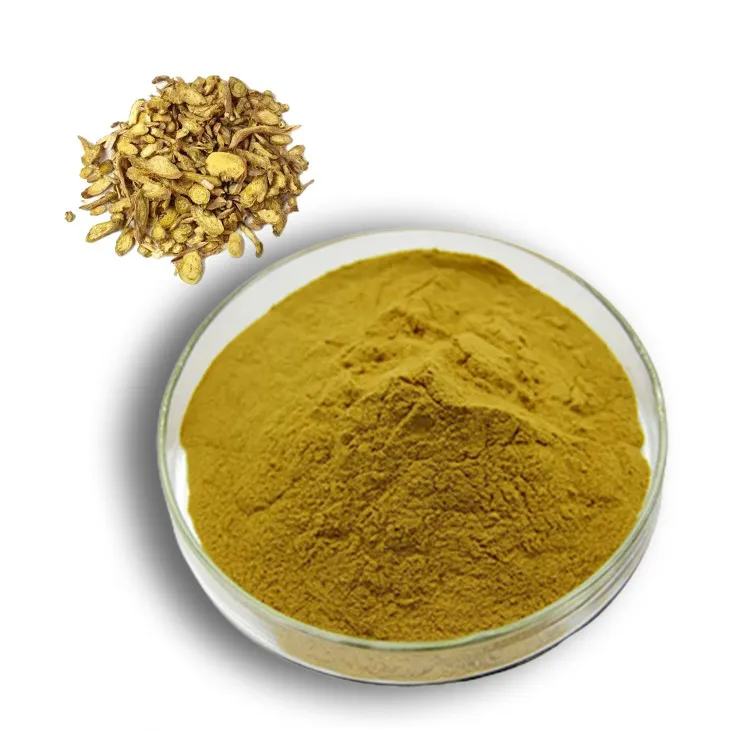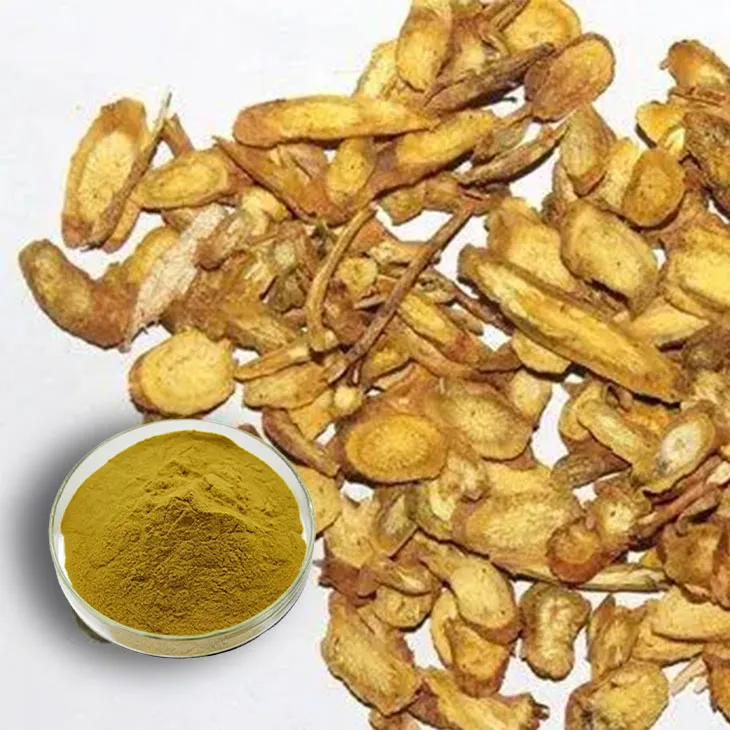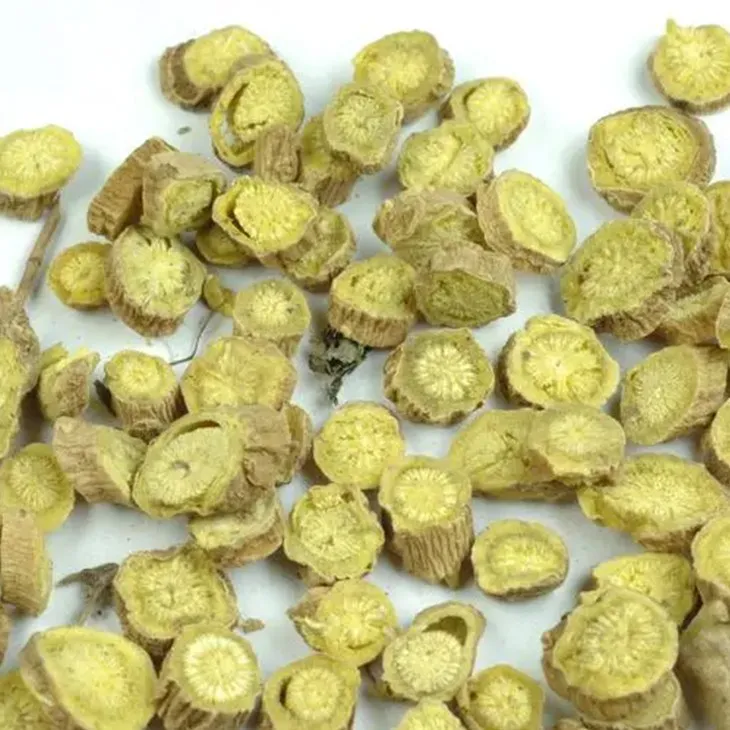- 0086-571-85302990
- sales@greenskybio.com
The Extraction Process of Baicalin.
2024-11-29

1. Introduction
Baicalin, a valuable bioactive compound, has emerged as a subject of significant interest in recent years. It exhibits a wide range of biological activities, making it highly sought - after in various fields such as pharmaceuticals, nutraceuticals, and traditional medicine. The extraction of Baicalin is a complex process that involves multiple steps and considerations.

2. Raw Material Acquisition
The source of Baicalin is of utmost importance. Scutellaria baicalensis is the primary plant from which baicalin is obtained. Sustainable sourcing of this raw material is crucial for several reasons.
2.1 Importance of Sustainable Sourcing
- Environmental Conservation: Unsustainable harvesting can lead to the depletion of natural habitats of Scutellaria baicalensis. This can disrupt ecosystems and lead to the loss of other plant and animal species that depend on these habitats.
- Long - term Availability: To ensure a continuous supply of baicalin for research and commercial applications, sustainable farming and harvesting practices need to be implemented. This helps in maintaining a stable source of the raw material over time.

3. Extraction Methods
There are different methods available for the extraction of baicalin, each with its own advantages and limitations.
3.1 Supercritical Fluid Extraction
- Principle: Supercritical fluid extraction (SFE) is an innovative and environmentally friendly method. In this process, carbon dioxide is commonly used as the supercritical fluid. A supercritical fluid has properties that are intermediate between a gas and a liquid. It can penetrate the plant matrix effectively and selectively extract baicalin.
- Advantages:
- High Efficiency: It can extract baicalin with a relatively high yield compared to some traditional methods.
- Minimal Solvent Residue: Since carbon dioxide is used, which can be easily removed after extraction, there is very little solvent residue left in the extract. This is highly desirable, especially for applications in the pharmaceutical and nutraceutical industries where purity is of great importance.
3.2 Soxhlet Extraction
- Principle: Soxhlet extraction is a traditional solvent - based extraction method. In this technique, the solvent is continuously recycled through the plant material. The plant matrix containing baicalin is placed in a Soxhlet thimble, and the solvent vaporizes, rises, condenses, and then drips back onto the plant material, gradually extracting baicalin over time.
- Advantages and Disadvantages:
- Advantages: It is a well - established method that is relatively simple to set up and operate. It can handle larger quantities of plant material compared to some other methods.
- Disadvantages: It typically uses a large amount of solvent, which may lead to higher solvent costs and potential environmental issues associated with solvent disposal. Also, the extraction time can be relatively long.

4. Separation and Purification
After the extraction process, the resulting extract contains not only baicalin but also other components. Therefore, separation and purification steps are essential to obtain pure baicalin suitable for various applications.
4.1 Precipitation Methods
- Principle: Precipitation methods are often used as an initial step in separating baicalin from the mixture. By adjusting the conditions such as pH or adding certain reagents, baicalin can be made to precipitate out of the solution while other components remain in the supernatant.
- Limitations: However, precipitation methods may not provide a very high degree of purity on their own. There may still be some impurities co - precipitated with baicalin, which requires further purification steps.
4.2 High - Performance Liquid Chromatography (HPLC)
- Principle: HPLC is an advanced and highly precise technique for purification. It separates the components of a mixture based on their differential interactions with a stationary phase and a mobile phase. In the case of baicalin purification, the sample is injected into the HPLC system, and the different components are eluted at different times, allowing for the isolation of pure baicalin.
- Advantages:
- High Purity: It can achieve a very high degree of purification, ensuring that the baicalin obtained is of pharmaceutical - grade quality.
- Quantitative Analysis: HPLC can also be used for quantitative analysis of baicalin, which is important for determining the concentration of baicalin in the extract and for quality control purposes.

5. Applications of Baicalin
Once purified, baicalin has a wide range of applications in different industries.
5.1 Pharmaceutical Research
- Anti - inflammatory Properties: Baicalin has been shown to possess anti - inflammatory effects, which makes it a potential candidate for the development of drugs for treating inflammatory diseases such as arthritis.
- Antiviral and Antibacterial Activities: It also exhibits antiviral and antibacterial activities, which could be explored for the development of new antimicrobial agents.
5.2 Nutraceutical Development
- Health Supplements: Baicalin can be incorporated into health supplements due to its various beneficial properties. It may be used to enhance the immune system, improve antioxidant status, or provide other health - promoting effects.
- Functional Foods: In the field of functional foods, baicalin could be added to certain food products to provide added health benefits.
6. Conclusion
The extraction of baicalin is a multi - step process that involves careful consideration of raw material acquisition, extraction methods, and separation and purification techniques. The choice of extraction method depends on various factors such as cost, efficiency, and environmental impact. With the increasing demand for baicalin in different applications, continuous research and development in extraction and purification processes are necessary to ensure a sustainable supply of high - quality baicalin.
FAQ:
What is the main source of baicalin?
The main source of baicalin is Scutellaria baicalensis.
What are the advantages of supercritical fluid extraction for baicalin?
Supercritical fluid extraction, using carbon dioxide as the supercritical fluid, has the advantages of high - efficiency selective extraction of baicalin and minimal solvent residue. It is also an emerging and environmentally friendly method.
Why is Soxhlet extraction still used in some laboratories?
Although there are new extraction methods, Soxhlet extraction is still widely used in some laboratories because it can continuously recycle the solvent to extract baicalin from the plant matrix.
Why are separation and purification necessary after baicalin extraction?
After extraction, the extract usually contains other components besides baicalin. So separation and purification are essential to obtain pure baicalin suitable for pharmaceutical research, nutraceutical development, and other high - end applications.
What methods can be used for the purification of baicalin?
Precipitation methods can be used for the initial separation of baicalin from the mixture. Subsequently, advanced techniques such as high - performance liquid chromatography (HPLC) can be employed for precise purification.
Related literature
- Optimization of Baicalin Extraction from Scutellaria baicalensis Georgi by Response Surface Methodology"
- "Supercritical Fluid Extraction of Baicalin from Scutellaria baicalensis: Process Optimization and Comparison with Conventional Extraction Methods"
- ▶ Hesperidin
- ▶ citrus bioflavonoids
- ▶ plant extract
- ▶ lycopene
- ▶ Diosmin
- ▶ Grape seed extract
- ▶ Sea buckthorn Juice Powder
- ▶ Beetroot powder
- ▶ Hops Extract
- ▶ Artichoke Extract
- ▶ Reishi mushroom extract
- ▶ Astaxanthin
- ▶ Green Tea Extract
- ▶ Curcumin Extract
- ▶ Horse Chestnut Extract
- ▶ Other Problems
- ▶ Boswellia Serrata Extract
- ▶ Resveratrol Extract
- ▶ Marigold Extract
- ▶ Grape Leaf Extract
- ▶ blog3
- ▶ blog4
-
Nature's Bounty Tongkat Ali Extract Powder.
2024-11-29
-
Nature's Bounty lotus leaf extract.
2024-11-29
-
Organic Almond Extract Powder Supplier.
2024-11-29
-
Bulk purchase of camu - camu extract.
2024-11-29
-
Chinese peppermint oil powder suppliers.
2024-11-29
-
White Peony Extract
2024-11-29
-
Red Date Extract
2024-11-29
-
Yohimbine Bark Extract
2024-11-29
-
Black Pepper Extract
2024-11-29
-
Elderberry Extract
2024-11-29
-
Citrus bioflavonoids
2024-11-29
-
Avocado Extract Powder
2024-11-29
-
Cassia Seed Extract
2024-11-29
-
Angelica sinensis extract
2024-11-29
-
Dandelion Leaf Extract
2024-11-29





















